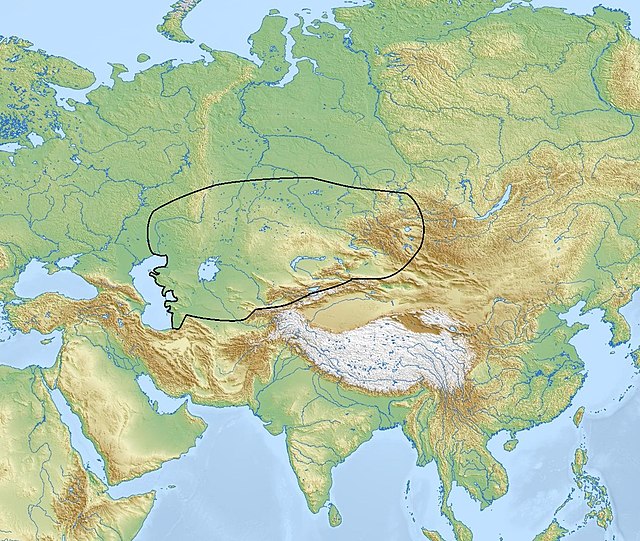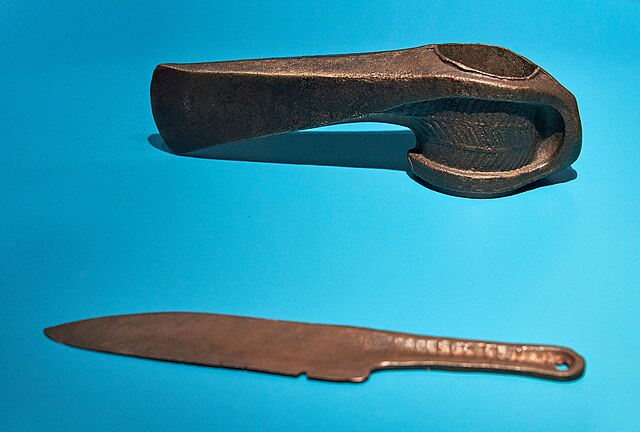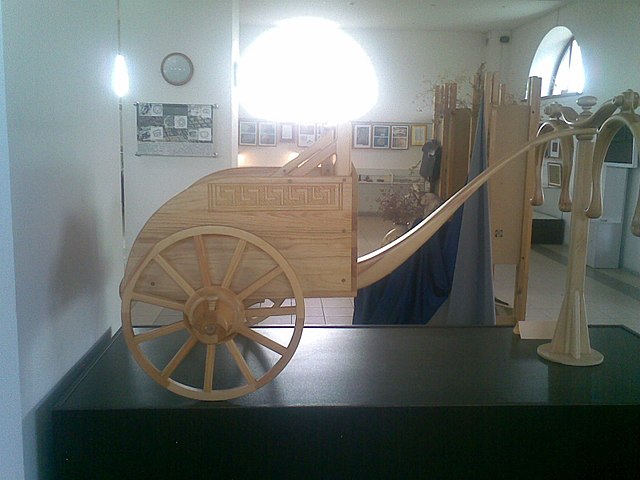The Ingala Valley is an archaeological district in the area between the Tobol and Iset rivers. It is the largest one in the south of the Tyumen Oblast, and belongs to the Iset cultural and historical province. It has 177 kurgans, 55 archaeological sites of federal significance and 5 regional natural monuments.
The numbers mean: 1 - Mary's ravine, 2 - Krasnogorsky arheotop (Khripunova grave field, Lizunovo hill fort), 3 - Kolovskiy, 4 - Upper Ingalsky Borok, 5 - Lipihinskoe, 6 - Borovushki, 7 - Skorodum, 8 - Tyutrinsky grave field, 9 - Ingalinskoe, 10 - Sloboda-Beshkilskoe hill fort, 11 - Lower Ingalinskoe, 12 - Pushkarevo, 13 - Ak-Pash, 14 - Sazyk, 15 - Sosnovka, 16 - Ostrov, 17 - Buzan, 18 - Imbiryay, 19 - Ustyug, 20 - Schetkovo, 21 - Old-Lybaevo, 22 - Dvuhozernoe, 23 - Gilyova, 24 - Uk, 25 - Khokhlovskiy kurgan.
A view from a high terrace of the Iset River
The Khripunova grave field. A hole remaining after grave robbery.
Belt plaque from the Siberian collection of Peter the Great: it was sent by M. P. Gagarin, governor of Siberia in Tobolsk, in 1716. Dated circa 300 BCE.
The Andronovo culture is a collection of similar local Late Bronze Age cultures that flourished c. 2000–1150 BC, spanning from the southern Urals to the upper Yenisei River in central Siberia. Some researchers have preferred to term it an archaeological complex or archaeological horizon. The slightly older Sintashta culture, formerly included within the Andronovo culture, is now considered separately to Early Andronovo cultures. Andronovo culture's first stage could have begun at the end of the 3rd millennium BC, with cattle grazing, as natural fodder was by no means difficult to find in the pastures close to dwellings.
Andronovo culture
Andronovo axe and knife
Chariot model, Arkaim museum
Reconstruction of an Andronovo burial. Lisakovsk Museum








